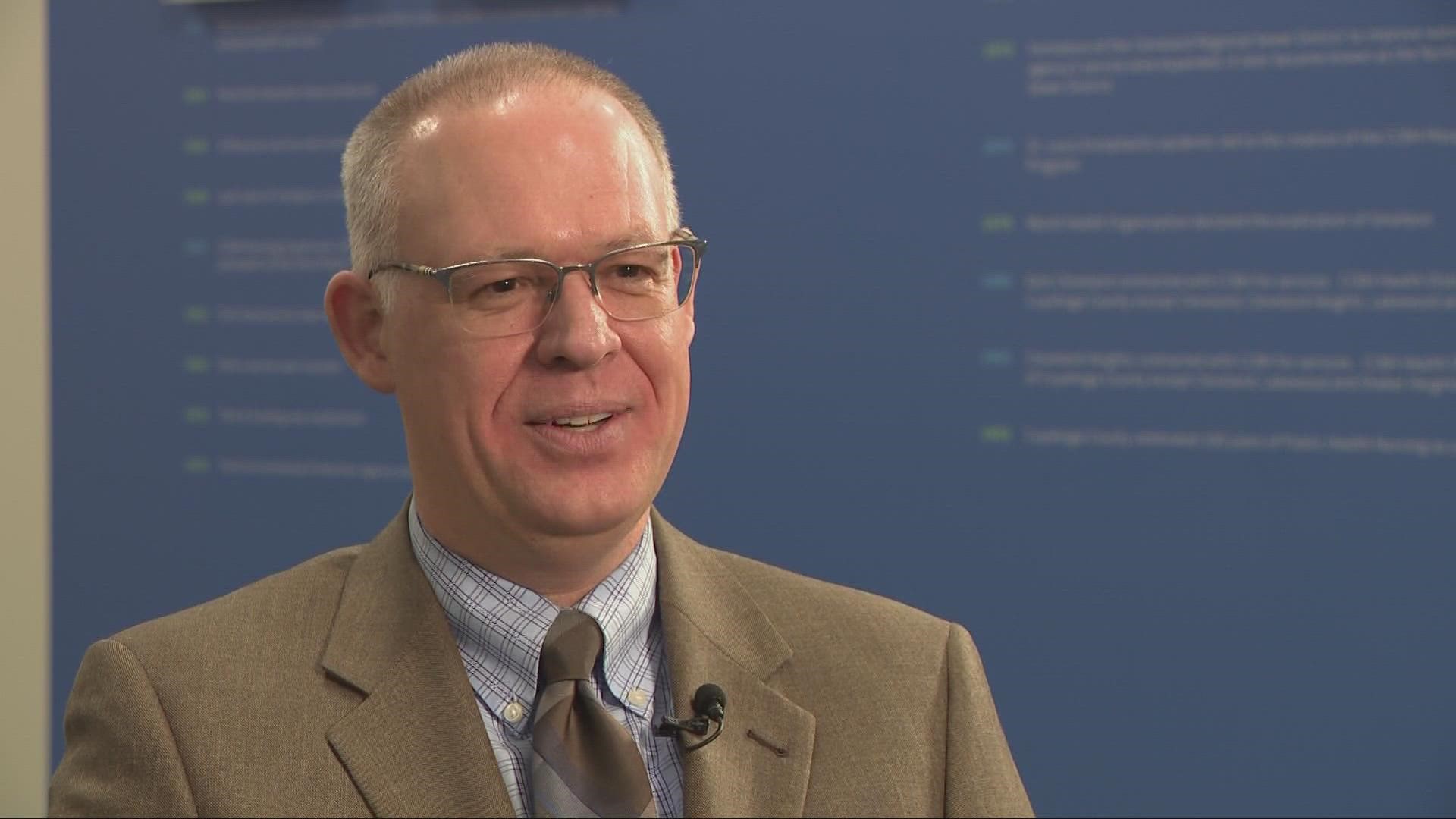PARMA, Ohio — Terry Allan always said, 'public health is the greatest story never told.' But he and his team at the Cuyahoga County Board of Health have been at the center of many public health stories over the years.
I know, because I'm one of the people who reported them.
He and I often talked about the "next" pandemic, but neither of us thought we'd see it our careers. But just in case, we made plans. I asked Allan to help me write a pandemic playbook for WKYC.
After each public health crisis we went through, I would update the plan. It certainly came in handy in February of 2020. Still, Allan was on my speed dial to double check. Because of that planning, we were one of the first stations nationally to begin safety protocols long before anyone was sent home for lockdown.
There's a reason we call him the 'Captain of Crisis.' Because there's something to be said for experience and influence. To understand Allan's, just look back at what he's faced the last two decades.
I first met him in March of 2001 during a Legionella outbreak at the Ford Brook Park plant.
"The union supported us in the process and the plant shut down for a while," Allan said.
Long enough for the plant to be thoroughly cleaned and lessons to be learned.
"Ford developed a national water management plan that is being used by auto industry all around the world as a result of that process. So something good came out of it in terms of prevention of exposure," Allan said.
A few months later, 9-11, and fears of Anthrax and Smallpox bio weapons emerged. That lead to a pandemic playbook and blueprint for mass vaccination clinics. Public health got a seat at the command center, too.
"There was a cascade that really started with public health planning around the country. We were not involved in incident command response in emergencies in that way prior," Allan said.
In 2002, West Nile Virus invaded Ohio, then concerns of SARS. Allan took over as Health Commissioner in 2004 where he would usher in Ohio's indoor smoking ban, face a Norovirus outbreak and the 2009 Swine (H1N1) Flu epidemic, where the mass vaccination plan went into use for the first time.
Then in 2014, a nurse working in a Dallas hospital was exposed to Ebola. She flew home to Akron and set off panic in Northeast Ohio.
"We went many, many days with sleepless nights, but we fortunately did not see transmission. We were very busy at identifying potential people on planes that might have been exposed. And we were busy trying to calm fears," Allan said.
Throughout the years he and his team also dealt with the opiate epidemic, clustered outbreaks of bacterial meningitis and of course wicked influenza seasons.
And then 2020 arrived. The first global pandemic in a century. A coronavirus called COVID-19. A virus unlike science had seen before in the way it attacked humans in a myriad of ways. And no treatment available.
"We were flying blind early on. We had to just follow what we thought were the best recommendations on what was available. We try to provide guidance to our long term care facilities to try to reduce exposures to our most vulnerable," Allan said.
The first three cases in Ohio were in Cuyahoga County. Cuyahoga County also bore the brunt of case loads throughout the pandemic.
I asked Allan when he first had a day off.
"It was at least a year, I worked, I think, straight every day for a year, but so did you, and so did lots of other people," Allan said.
In two years his team fielded 60,000 phone calls for just information. Not including the contact tracing. He held more than a hundred news briefings.
"Over 4,000 people have died, we've had over three times as many people quarantined so we're talking on the order of five, 600,000 people that have been impacted," Allan said.
Some decisions, especially those relating to schools and masks, drew heavy criticism.
Allan followed the science and says it worked.
"Sometimes we have to make difficult decisions and recommendations, but we're doing it to keep people out of the hospital and we do it to save lives," he said.
I asked what will haunt him.
"The 4,000 people that died, the early death happening in the nursing homes when we were still trying to understand what was happening," he said.
The accomplishments that make him proud may surprise you.
Such as cutting the number of septic systems in the county by more than half.
"Which has reduced a lot of illicit discharges or communities have replaced septic systems to reduce illicit discharges, cross connections with sewage going into creeks and into the lake. You know, that's pretty cool," Allan said.
Under his watch the rate of childhood lead poisoning in Cuyahoga County dropped 76%. There was a 28% drop in heart attacks after the indoor smoking ban was put into place.
Allan leaves after 33 years in public health, including 18 years as Cuyahoga County Health Commissioner. He'll tell you his best memories are with those who worked with him on the front lines, those he credits with doing the work that made a difference.
"Most of all, for me, it's been an honor to serve with the staff, this staff, particularly over the last two years," he said.
Terry Allan will retire from the Cuyahoga County Board of Health Thursday, ushering a new era under incoming Health Commissioner, Dr. Roderick (Rod) Harris.
Harris formerly served as a deputy director for the Allegheny County Health Department in Pittsburgh. Harris is a Cleveland native who began his public health career with CCBH in environmental health.
Previous Reporting:

